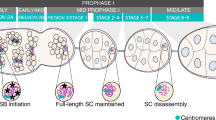Abstract
Ace IJ29 and Ac IJ40 are cold- and heat-sensitive variants of the gene coding for acetylcholinesterase in Drosophila melanogaster. In the homozygous condition, these mutations are lethal when animals are raised at restrictive temperatures, i.e., below 23° C for Ace IJ29 or above 25° C for Ace IJ40. The coding regions of the gene in these mutants were sequenced and mutations changing Ser374 to Phe in Ace IJ29 and Pro75 to Leu in Ace IJ40 were found. Acetylcholinesterases bearing these mutations were expressed in Xenopus oocytes and we found that these mutations decrease the secretion rate of the protein most probably by affecting its folding. This phenomenon is exacerbated at restrictive temperatures decreasing the amount of secreted acetylcholinesterase below the lethality threshold. In parallel, the substitution of the conserved Asp248 by an Asn residue completely inhibits the activity of the enzyme and its secretion, preventing the correct folding of the protein in a non-conditional manner.
Similar content being viewed by others
References
Arpagaus M, Fournier D, Toutant JP (1988) Analysis of acetylcholinesterase molecular forms during the development of Drosophila melanogaster. Evidence for the existence of an amphiphilic monomer. Insect Biochem 18:539–549
Bertrand D, Cooper E, Valera S, Rungger D, Balivet M (1990) Electrophysiology of neuronal nicotinic acetylcholine expressed in Xenopus oocytes following nuclear injection of genes of cDNAs. In: Methods in neurosci 4:174–193
Ellman JC, Courtney KD, Andres Y Jr, Featherston RM (1961) A new and rapid colorimetric determination of acetylcholinesterase activity. Biochem Pharmacol 7:88–95
Fournier D, Karch F, Bride JM, Hall LMC, Berge JBB, Spierer P (1989) Drosophila melanogaster acetylcholinesterase gene: structure, evolution and mutations. J Mol Biol 210:15–22
Fournier D, Mutero A, Rungger D (1992) Drosophila acetylcholinesterase; expression of a functional precursor in Xenopus oocytes. Eur J Biochem 203:513–519
Gausz J, Hall LMC, Spierer A, Spierer P (1986) Molecular genetics of the rosy-Ace region of Drosophila melanogaster. Genetics 112:65–78
Greenspan RJ, Finn JA, Hall JC (1980) Acetylcholinesterase mutants in Drosophila and their effects on the structure and function of the central nervous system. J Comp Neurol 189:741–774
Hall JC, Kankel DR (1976) Genetics of acetylcholinesterase in Drosophila melanogaster. Genetics 83:517–535
Hall JC, Alahiotis SN, Strumpf DA, White K (1980) Behavioral and biochemical defects in temperature-sensitive acetyl cholinesterase mutants of Drosophila melanogaster. Genetics 96:939–965
Hall LMC, Spierer P (1986) The Ace locus of Drosophila melanogaster, structural gene for acetylcholinesterases with an unusual 5'leader. EMBO J 5:2949–2954
Hoffmann F, Fournier D, Spierer P (1992) A minigene rescues acetylcholinesterase lethal mutations in Drosophila melanogaster. J Mol Biol 223:17–22
Holton TA, Graham MW (1991) A simple and efficient method for direct cloning of PCR products using ddT-tailed vectors. Nucleic Acids Res 19:1156
Krejci E, Duval N, Chatonnet A, Vincens P, Massoulie J (1991) Cholinesterase-like domains in enzymes and structural proteins: functional and evolutionary relationships and identification of a catalytically essential aspartic acid. Proc Natl Acad Sci USA 88:6647–6651
Mutero A, Fournier D (1992) Post-translational modifications of Drosophila acety1cholinesterase. In vitro mutagenesis and expression in Xenopus oocytes. J Biol Chem 267:1840–1845
Nagoshi RN, Gelbart WN (1987) Molecular and recombinational mapping of mutations in the Ace locus of Drosophila melanogaster. Genetics 117:487–502
Nakamaye K, Eckstein F (1986) Inhibition of restriction endonuclease NciI cleavage by phosphorothioate groups and its application to oligonucleotide-directed mutagenesis. Nucleic Acids Res 14:9679–9698
Primo-Parmo SL, Bartels C, Hidaka K, Lightstone H, van der Spek A, La Du BN (1992) Heterogenicity of the silent phenotype of human butyrylcholinesterase, identification of ten new mutations. [Abstract] 36th OHOLO Conference. In: Schafferman A, VePan B (eds) Multidisciplinary approaches to cholinesterase functions. Plenum publishing corp. NY. Eilat, 6–10 April
Sanger F, Nicklen S, Coulson AR (1977) DNA sequencing with chain terminating inhibitors. Proc Natl Acad Sci USA 74:5463–5467
Sussman JL, HarelM, Frolow F, Oefner CH, Goldman A, Toker L, Silman I (1991) Atomic structure of acetylcholinesterase from Torpedo californica: a prototypic acetylcholine-binding protein. Science 253:872–879
Toutant JP, Arpagaus M (1990) Quaternary structure and hydrophobic interactions of Drosophila acetylcholinesterase in wild-type flies and in mutants of the Ace locus. In: Borkovec AB, Masler EP (eds) Insect neurochemistry and neurophysiology. Humana Press, zz, pp 239–242
Author information
Authors and Affiliations
Additional information
Communicated by M. Ashburner
Rights and permissions
About this article
Cite this article
Mutero, A., Bride, JM., Pralavorio, M. et al. Drosophila melanogaster acetylcholinesterase: Identification and expression of two mutations responsible for cold- and heat-sensitive phenotypes. Molec. Gen. Genet. 243, 699–705 (1994). https://doi.org/10.1007/BF00279580
Received:
Accepted:
Issue Date:
DOI: https://doi.org/10.1007/BF00279580




